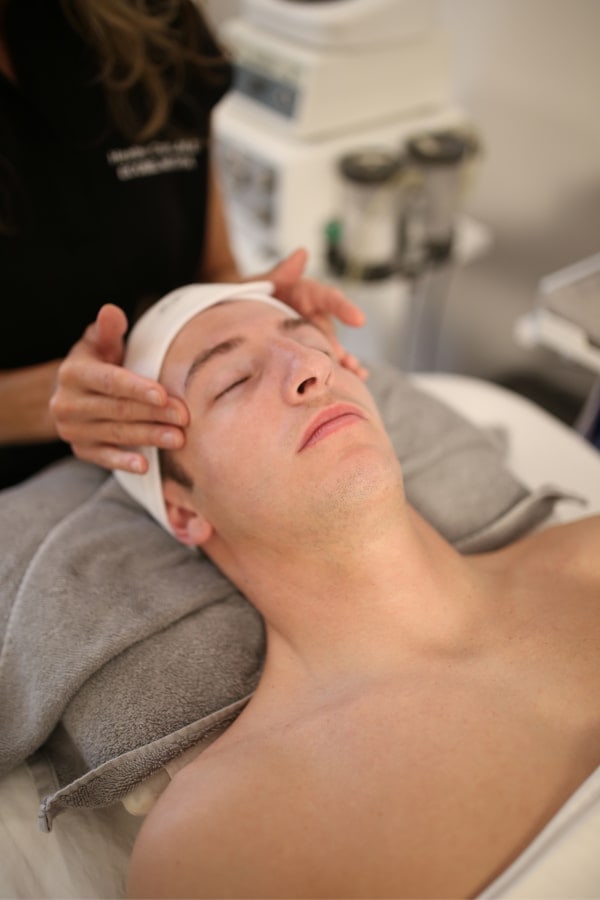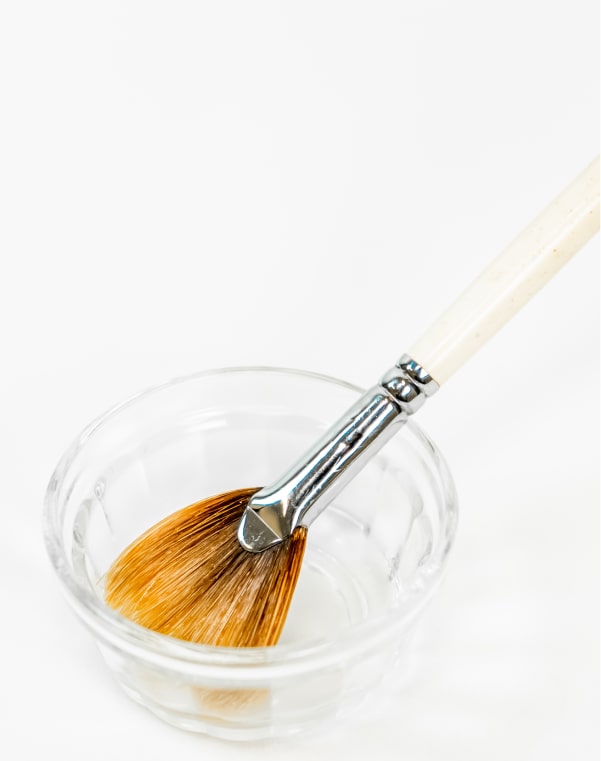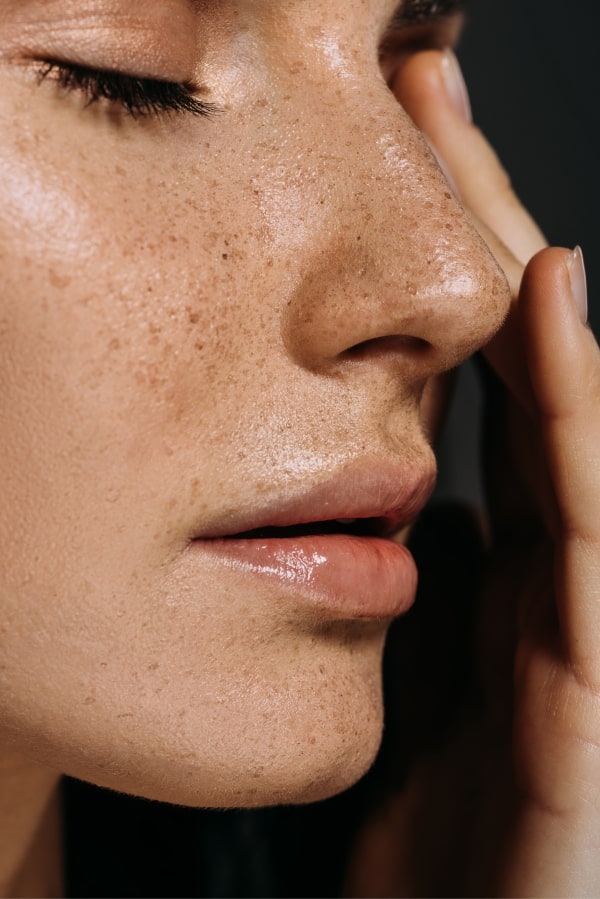Chemical Peel
Get ready for smoother, softer, and more radiant skin with a professional chemical peel treatment.
Chemical Peels
Acids for your skin? While it may sound like a skincare no-no, using exfoliating and rejuvenating acids via a chemical peel to revive your complexion is a time-tested way to improve the health of your complexion. For years, professional chemical peels have been a go-to treatment to refresh the skin quickly and provide dramatic results. However, unlike at-home exfoliating scrubs and treatments, the degree of exfoliation that can be accomplished with a professional chemical peel is far more significant with better results.
The goal of a chemical peel is to safely and gently lift away dead skin cells that can clog the pores and lead to a lackluster complexion. Ridding the skin’s surface of this buildup allows it to appear smoother, softer, and better equipped to reflect light properly, giving it a healthy, natural glow. Plus, fewer dead skin cells on the surface means there’s less to clog up pores, which can cause breakouts.
Today’s chemical peels are a more advanced version with better, more reliable, and more predictable results. Rather than leaving the skin red, peeling, and flaky, a light refresh can be achieved with little or no downtime, making chemical peels a must for many different skin types and tones. No matter the skin issue, there’s a chemical peel (many customizable) to help you achieve your skin goals.

CHEMICAL PEELS
What is a chemical peel?
A chemical peel is an acid-based skin rejuvenating and exfoliating treatment that uses various skin-safe acids to speed up the rate at which the skin naturally exfoliates and sheds. If smoother, more radiant, and healthier skin sits at the top of your skincare goals, then a chemical peel is one treatment you’ll want to add to your current skincare routine. Chemical peels are commonly used on the face but are also favored for improving the skin on the neck, chest, and hands.
Acids are the critical exfoliating ingredient in chemical peels. Applying one of several different acids (or a combination) to the skin incites an exfoliating effect to gently and safely remove dead skin cells. With less dead skin on the surface, the texture and tone of the skin improve, and fewer breakouts. Chemical peels can also help erase the signs of sun damage, hyperpigmentation, and acne scars. In addition, some peels contain anti-inflammatory and botanical ingredients to help keep the skin balanced, nourished, and well-hydrated.

The nice thing about chemical peels is that they are a quick and easy way to dislodge dead skin cells and brighten the skin while stimulating collagen production. Different acids in chemical peels do different things, and before your peel, your aesthetician will examine your skin to determine the acid that will target your current skin needs. It’s also important to know that a professional chemical peel uses a stronger concentration of ingredients and active acids to produce more effective results than an at-home peel. Peels also range in intensity from light to medium and deep. The commonly used acids in these peels include salicylic, lactic, glycolic, mandelic, trichloroacetic acids, resorcinol, Jessners, and the deepest-acting ingredient, phenol. The lighter the peel, the less it penetrates the skin, and the quicker the results can be seen. The stronger the peel, the more downtime but the more dramatic the results. Often, you can do the deepest peels only once in your lifetime.
Most light and medium chemical peels are performed as a series and can be done independently or with another treatment, such as a facial. The more frequently you do a chemical peel, the more exfoliated and refreshed the skin becomes.
At Ecobel Med Spa, we offer Dennis Gross Skincare and Sesderma chemical peels.
How Does a Chemical Peel Work?
Chemical peels, which are often performed by a dermatologist or aesthetician and in a medical office or med-spa, rely on acids to exfoliate the outermost layers of the skin. The treatments involve applying one of several different skin-safe acid solutions directly to the skin and allowing it to remain on the skin so that the acid can go to work and exfoliate the skin. As the acid penetrates the skin, it breaks up the bonds between the dead skin cells and the skin itself, loosening them and lifting away those dead cells. While this process takes place, it also creates a controlled skin injury to help induce collagen production and allow the skin to heal correctly. Once the allotted processing time is up, the peel is neutralized with a unique solution and then washed off the skin. Then, fresh skin comes to the surface.
Depending on the acid used and the type of chemical peel, the skin may appear somewhat red directly after the treatment. Some acids work deeper than others to produce a faster onset of exfoliation, while others work effectively but with little skin sloughing on the surface. Of course, various factors can influence how a chemical peel works and its end effects, including its pH levels, the concentration, what else it is mixed with, and how long it is left on the skin.


Like a laser treatment that resurfaces the skin, chemical peels achieve the same end goal. But chemical peels rely on physical exfoliating agents instead of using heat or energy as a laser does. This results in less downtime and recovery, yet still great results. Unlike lasers, most peels are safe for various skin types and tones, but a consultation is always imperative to determine the right course of treatment for you
Chemical peels are a long-standing skin-perfecting treatment that can help improve skin issues, including:
- Rough and uneven texture
- Fine lines and wrinkles
- Acne scars
- Dark spots and hyperpigmentation
- A dull-looking complexion
- Active acne breakouts
- Decreased collagen and elastin levels in the skin
Post-peel, it’s also normal for some minor dryness or patches of skin flaking, which is simply the dead skin shedding itself from the surface. Again, keeping the skin moisturized and well-protected from the sun is essential. After a few days, any side effects from the peel should subside as the new skin emerges to the surface.
CHEMICAL PEELS
Who is a Chemical Peel Best for?
Most skin types and tones—even darker ones—benefit from a chemical peel. Discuss your skin history and other pertinent information with your aesthetician to ensure no adverse effects. And, of course, ensure they have a good knowledge of the skin and experience with the chemical peel you are doing.
Specific skin issues tend to respond better to a chemical peel than others. For example, if you are experiencing any of the concerns below, then a chemical peel may be the proper treatment for you:
Dullness
Discoloration and hyperpigmentation
Breakouts
Acne scars
Oily skin
Fine lines and wrinkles
CHEMICAL PEELS
The Results
With a chemical peel, you can expect to improve skin tone, texture, and specific skin conditions. Removing the skin’s outermost layer helps to erase signs of damage and uneven pigmentation by revealing smoother, fresher skin underneath. The most common results of a chemical peel include the following:
Smoother skin that’s healthier
Fewer lines and wrinkles
Better skin tone and texture
Fewer breakouts and acne scars
Improvement of age spots and hyperpigmentation
While the results of a chemical peel can be seen on the face, particular features, including around the mouth, eyes, and even the nose, tend to bear most of the improvement. Plus, as the peel works to even out the skin, it appears softer and more radiant, with less discoloration and fewer spots. Those who suffer from acne breakouts and scarring are likely to see fewer clogged pores and improvement in their pimples and scars.
Of course, the results of a chemical peel depend on your skin type and tone, the issues at hand, and the type of peel used. However, any changes seen in the skin are not permanent and require maintenance with repeat peels as needed. In addition, each peel’s results differ in longevity, which on average lasts from a few weeks to a few months to up to one year, depending on your skincare habits.
The Different Types of Chemical Peels
Not all chemical peels are created equal; some are more potent than others. Plus, only some benefit from the strongest type of peel available, which is why a consultation is of the utmost importance.
Stronger peels feel more intense on the skin. Regardless of their intensity level, most chemical peels have some tingling sensation—some can even feel like the skin is stinging slightly or spicy. However, acids in buffered chemical peels shouldn’t cause discomfort on the skin. And once the peel is neutralized, the skin should feel completely normal.
Superficial or light peels usually rely on an alpha-beta hydroxy acid (AHA) or beta hydroxy acid (BHA) like salicylic, lactic, or glycolic acid to provide subtle results with little to no downtime. They are compatible with most skin types and are often used to correct mild acne, sun damage, dull and dry skin, wrinkles, and hyperpigmentation.
Most medium-strength chemical peels utilize trichloroacetic acid (TCA) to correct and treat blemishes and acne, as well as post-breakout pigmentation and scarring, and even fine lines. These are more powerful than a lighter peel and can cause more extreme peeling and dryness.
The most potent type of chemical peel, deep peels harness the power of phenol to exfoliate the skin deeply. Most patients who undergo a deep phenol chemical peel only have one done in their lifetime. The peel is so intense that it requires anesthesia and is performed by a doctor, usually at the same time as a facial procedure like a facelift.
The Benefits of a Chemical Peel
The acids in a chemical peel work well to lift away dead skin cells, boost collagen, create younger-looking skin, tighten the skin, and speed up cell turnover. Chemical peels are also fantastic for cleaning out the pores so that breakouts are less frequent. Peels remain one of the best skin clarifying and rejuvenating treatments since they clear the skin of these dead skin cells. Just about anyone can benefit from a chemical peel.
The primary benefits of routine chemical peels include improving skin conditions such as the following:
- Breakouts and acne
- Acne scars and other scars
- Hyperpigmentation and discoloration
- Sun damage
- Uneven skin tone and texture
- Wrinkles and fine lines
- A dull complexion
While chemical peels can be used on the face and body, it’s important to note that the skin benefits will vary depending on the acids and type of peel used. Treatment with a qualified and expertly trained aesthetician and a consultation will help you determine the best chemical peel for your skin needs.

CHEMICAL PEELS
How Much Does a Chemical Peel Cost?
Every patient is different, so what benefits one skin type may not work as well for another. To determine the best peel for your skin, we recommend a consultation with our experienced team of skin experts and medical providers to discuss the treatment with you further and determine if a chemical peel is right for you.
The chemical peel is tailored to your needs, which is why the cost varies, although our chemical peels start at $200. Our team can customize a skin package to help you obtain the desired results. A consultation with our staff will ensure more accurate pricing.
Chemical peels
Common FAQs
Everyone has different skin and needs, so a consultation is preferred to determine what benefits your skin the most. In comparison, some patients need just one peel, while others require a series of peels to reap the maximum benefits.
No matter what chemical peel you get, avoiding the sun at all costs is vital. Sun exposure can cause inflammation within the skin, leading to discoloration, hyperpigmentation, prolonged healing, and potential scarring. Therefore, it’s best to avoid the sun for at least two weeks, if not longer, and wear sunscreen daily.
Avoid using exfoliating acids or any exfoliating cleanser or scrub for at least one week after your peel, if not longer.
No! No matter what, let the skin exfoliate at its speed and follow its natural course. Picking or peeling at shedding and flaking skin, or even trying to get the skin off with exfoliators, can lead to unwanted hyperpigmentation.
The face is the most commonly treated area for peels, but they are also effective for improving the tone and texture of the skin on the neck, hands, and chest.
It’s normal for the skin to appear red and even be sensitive after a peel, which can take 30 to 60 minutes, depending on what other treatments are performed. After the peel, you can return to your normal activities, although you may want to avoid exercising and saunas and hot baths, which can cause heat to be produced within the skin. If there’s slight peeling or redness, it can be mitigated with a good moisturizer and some concealing makeup. You may see some improvement in the first few days after the peel, which will continue to improve over the following week.
Unlock Your Skin's Potential at Ecobel Med Spa
If you’re ready to achieve smooth, flawless skin, look no further than Ecobel Med Spa. Our team of internationally trained, skilled estheticians and skin care specialists has 40 years of experience in the beauty industry. They will work with you to determine the best chemical peel plan for your skin’s needs. Don’t wait to get the healthy, glowing, youthful skin you deserve. Book your consultation for chemical peel treatment today!


